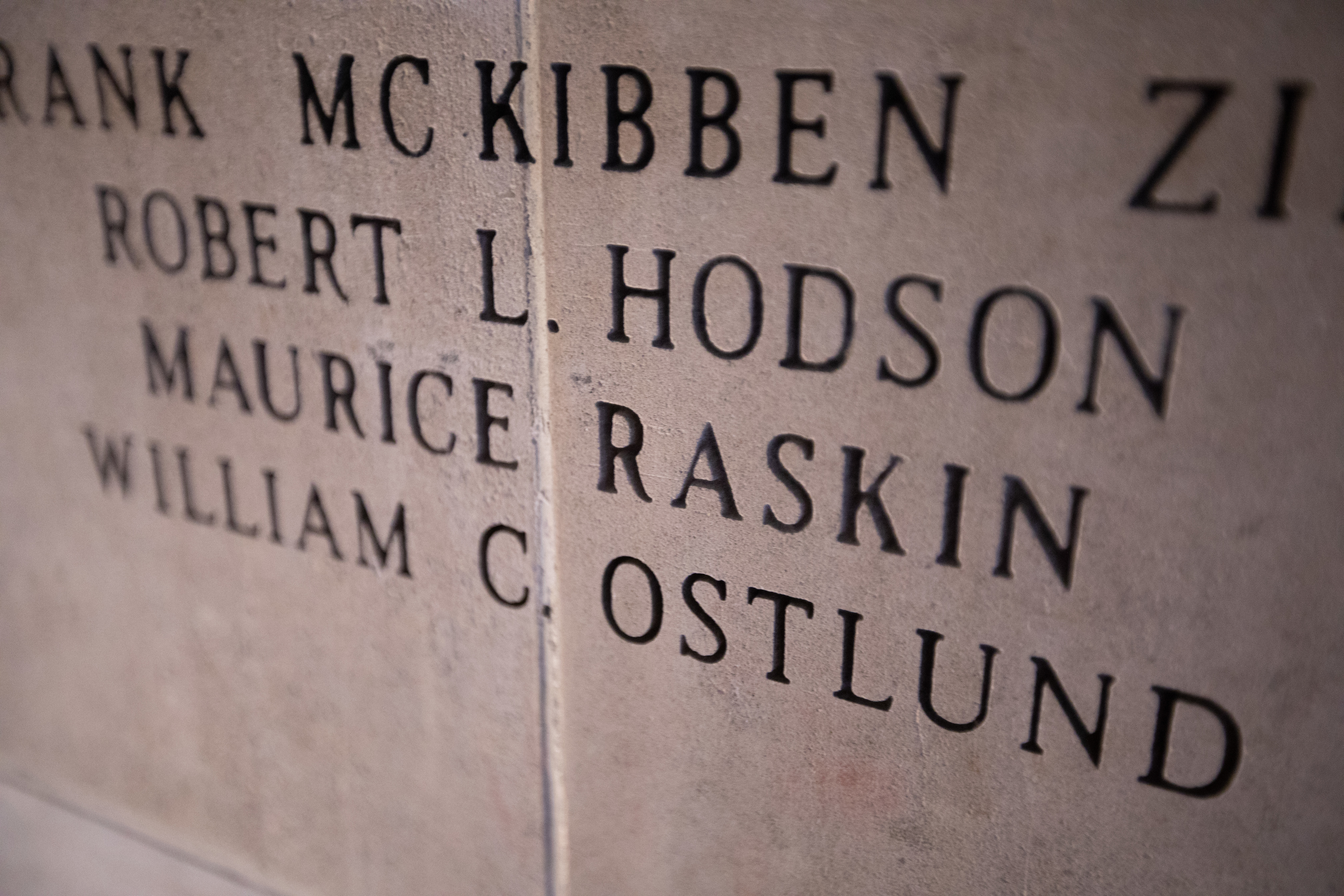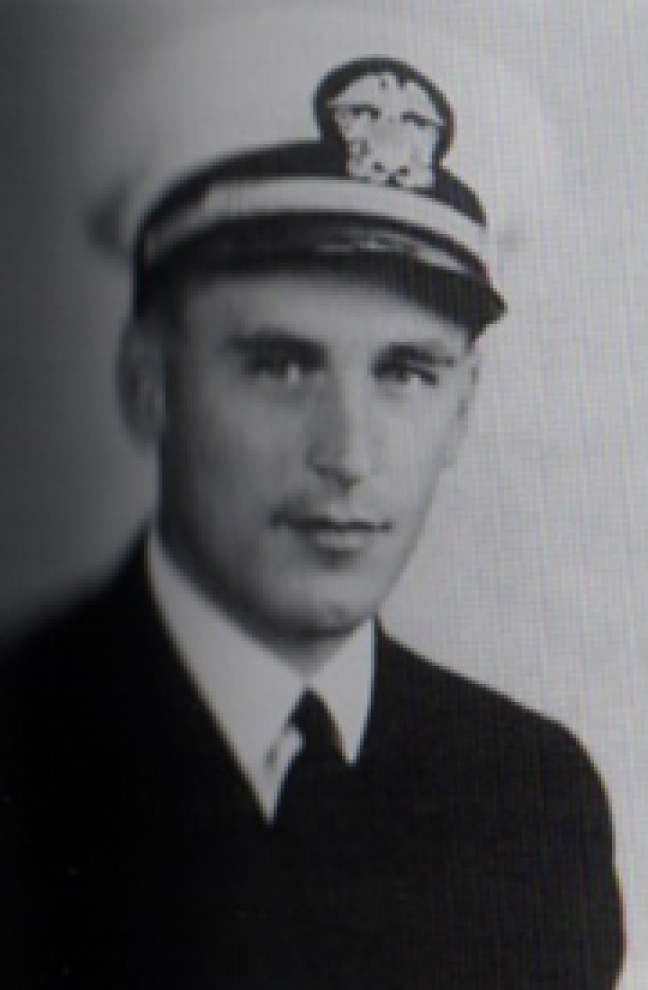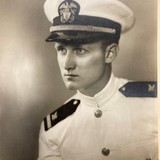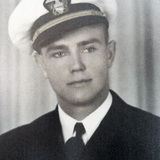
William C. Ostlund is the first new addition to the walls of Gold Star Hall in years. Photo by Christopher Gannon.
AMES, Iowa — What happened to the USS Gudgeon submarine and its 81 men – including William Conrad Ostlund – has been a mystery since the ship disappeared nearly 80 years ago.
Ostlund was born July 22, 1918, in Duncombe to Newet and Mary Ostlund. When he was 7 years old the family moved to Webster City, where they opened the first farm implement business in Hamilton County.
The Great Depression that struck America was exacerbated for the Ostlund family after Newet died from pneumonia in 1930. As the oldest of three children, Ostlund took on added responsibilities to help his mother. From the time he learned to drive, he made regular trips to Fort Dodge to pick up and drop off farming parts and equipment. He also helped raise his younger brothers Robert and John.
While at Lincoln High School, Ostlund was a star in both academics and athletics thanks to his hard work and dedication. He belonged to the local chapter of the National Honor Society and participated in the class play his senior year. He was captain of the baseball team, and a standout on the basketball, football and track teams.
After graduating high school in 1936, Ostlund came to Iowa State University (then College) to study agricultural business, and earned a spot on the Cyclone basketball team his freshman year.
He excelled in basketball and joined the Phi Delta Theta fraternity, but after contracting a severe case of poison ivy, Ostlund missed classes and fell behind as he recovered. At the end of his freshman year, Ostlund transferred to Butler University (then College) in Indianapolis. He graduated with a degree in business administration in 1941.
In February 1942, Ostlund enlisted in the U.S. Naval Reserve and was called up that October as a midshipman. Jan. 5, 1943, marked two milestones in his life: That morning, he was commissioned ensign. That afternoon, he and the woman he fell in love with at Butler, Peggy Burnell, married in Annapolis.
After completing submarine training in New London, Connecticut, Ostlund was assigned to the USS Gudgeon and reported for duty on Oct. 22, 1943. At this point, all three Ostlund boys were serving: John was a bombardier in the Eighth Air Force and Robert was a lieutenant in the U.S. Army Quartermaster Corps.
Ostlund participated in three patrols on the Gudgeon, to the Johnston atoll, Ryukyu Islands and Iwo Jima.
In the midst of his second patrol, Ostlund received word that he had been promoted to lieutenant junior grade. Shortly thereafter, the Gudgeon departed from Pearl Harbor on its 12th patrol. After stopping for fuel at the Johnston atoll on April 7, 1944, the ship departed to its assigned patrol area northwest of the Mariana Islands.
The details of what happened next remain shrouded in mystery. The ship and its crew of 81 men were never seen again. After nearly two months of radio silence, they were declared overdue and presumed lost on June 7, 1944.
In 2012, Ostlund’s nephew Mike Ostlund published a revised copy of his book, “Find ‘Em, Chase ‘Em, Sink ‘Em,” a research monograph into the service and disappearance of the Gudgeon. The book proposes an answer to the Gudgeon’s disappearance.
Relying on Japanese-English dictionaries and transcribed Japanese military sources, Mike Ostlund suggested that Yuoh Island – an island whose existence the U.S. Navy had no record of – was in fact Iwo Jima, where a Japanese pilot had documented sinking an American submarine in April 1944.
The Gudgeon has never been located, but Mike Ostlund’s research into the fate of his uncle and shipmates has revived the story and offered a possible explanation for what happened to the ship.


